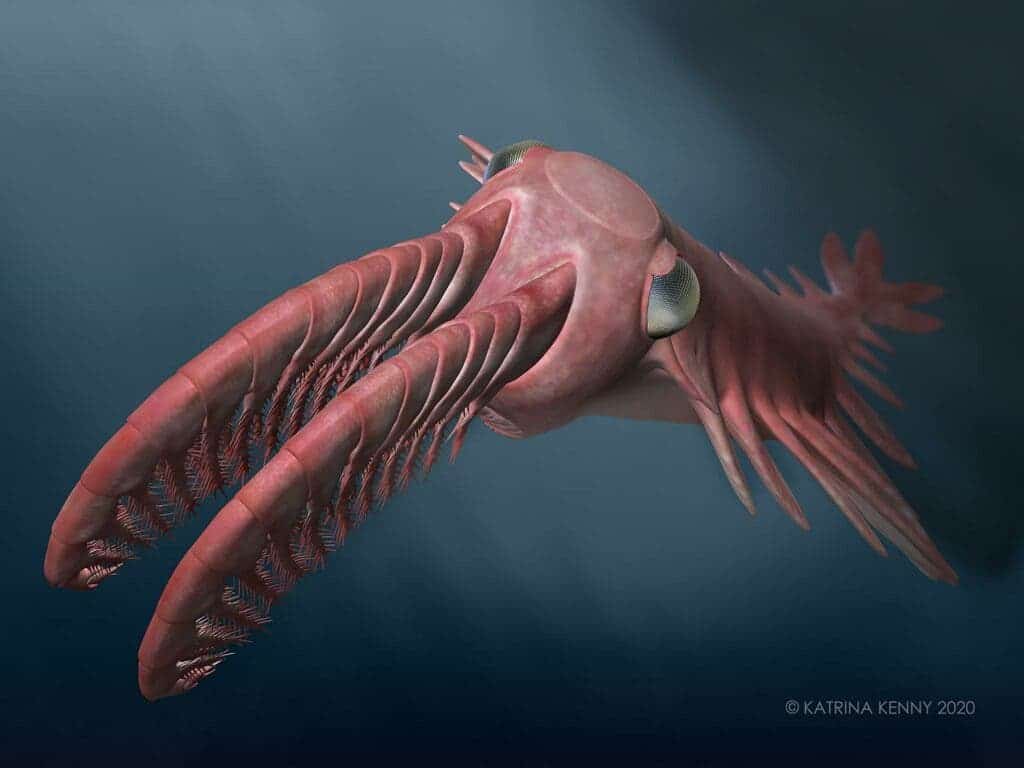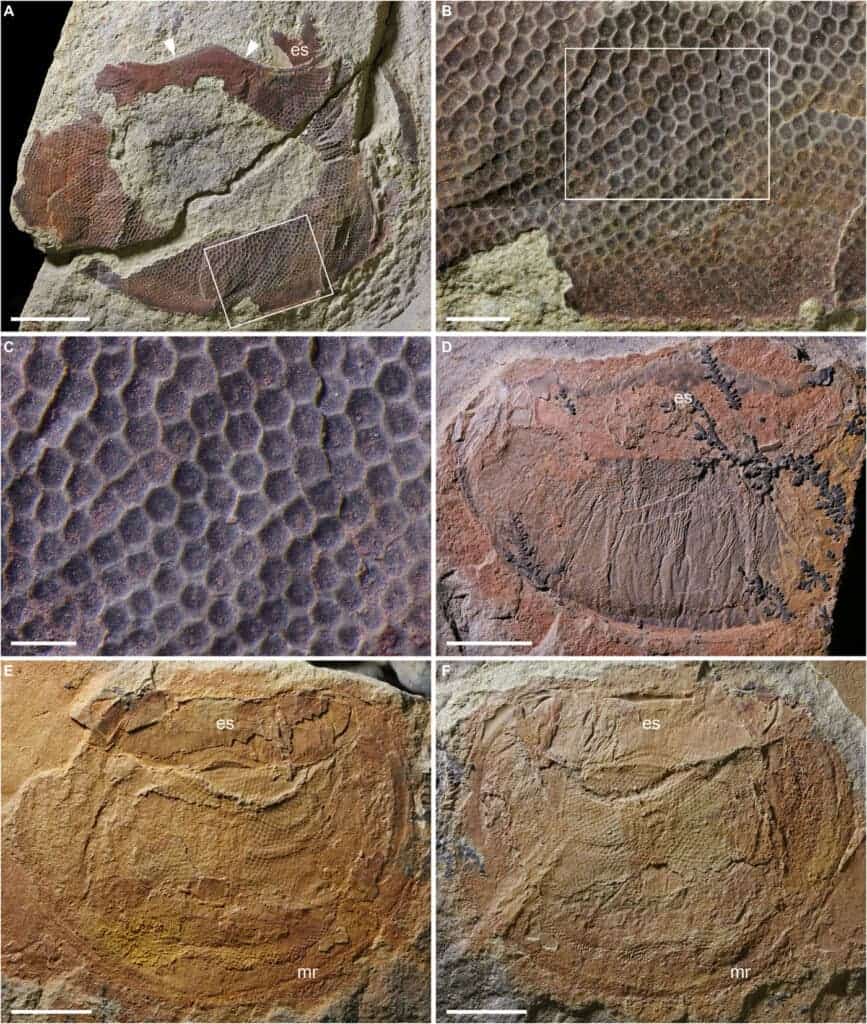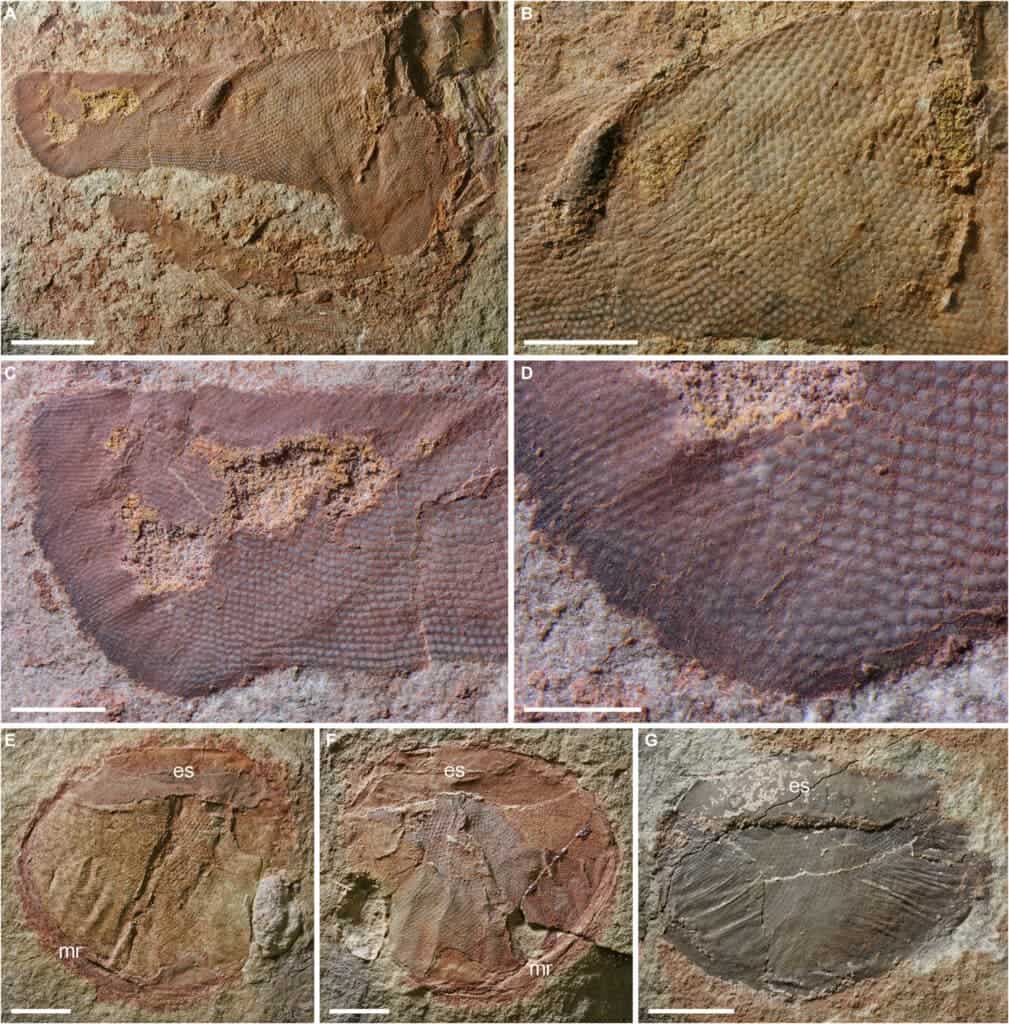A new paper examines how life first developed advanced eyes and sight, and how this led to an “evolutionary arms race” around 500 million years ago. The findings rely on radiodont fossils, a group of arthropods that were abundant in the ocean at the time.

The radiodont order, meaning “radiating teeth”, is comprised of many species with a similar body layout — a head and a pair of segmented limbs that would capture prey. They had circular mouths with sharp, serrated teeth, and were roughly squid-shaped. They likely inhabited the deeper layers of the ocean, at around 1000 meters in depth. Due to the low light levels there, they evolved large, sophisticated eyes in order to catch prey. But this ‘sensor’ upgrade would send ripples throughout life on the planet, the authors explain, making vision a driving force in evolution as it pitted predator against prey.
See food, eat food
“Our study provides critical new information about the evolution of the earliest marine animal ecosystems,” said Professor John Paterson from the University of New England’s Palaeoscience Research Centre, lead author on the study.
“In particular, it supports the idea that vision played a crucial role during the Cambrian Explosion, a pivotal phase in history when most major animal groups first appeared during a rapid burst of evolution over half a billion years ago.”
The development of complex eyes allowed animals to perceive their surroundings better than ever before, which also helped predators spot prey more easily. But sight can also warn the hunted of the hunter, so it became a very powerful driver of evolution — after all, the one with poorer sight might not make it through the day. It has retained its importance up to today when virtually every ecosystem and ecological interaction on the planet is shaped by sight.

The fossils used in this study were first unearthed around a century ago at Emu Bay Shale on South Australia’s Kangaroo Island and were comprised of isolated body parts. However, initial attempts to reconstruct the animals based on their fossils were quite unsuccessful and resulted in several “Frankenstein’s monsters”, the authors note. Over the decades, as more radiodont material was discovered, including whole bodies, we’ve gained a better understanding of these animals, their body structure, diversity, even possible lifestyles. Still, the specimens from Emu Bay Shale had some unique properties.
“The Emu Bay Shale is the only place in the world that preserves eyes with lenses of Cambrian radiodonts. The more than thirty specimens of eyes we now have, have shed new light on the ecology, behavior, and evolution of these, the largest animals alive half-a-billion years ago,” says Associate Professor Diego García-Bellido from the University of Adelaide and South Australian Museum, a co-author of the paper.
The team worked with these fossils before. They published two papers describing the fossilized eyes recovered from the site. The first one looked at isolated eye specimens of up to one centimeter in diameter, which remain unassigned to a species up to now. The second paper analyzed the eyestalks of Anomalocaris, a top predator in its day that grew up to one meter in length. The current paper, according to the authors, identifies that first, unknown species: ‘Anomalocaris’ briggsi, a new genus that “is yet to be formally named,” Prof. Paterson said.

“We discovered much larger specimens of these eyes of up to four centimetres in diameter that possess a distinctive ‘acute zone’, which is a region of enlarged lenses in the centre of the eye’s surface that enhances light capture and resolution.”
The large lenses of these animals suggest that they could work in the dim light of the deep sea, and were likely very similar to those of modern amphipod crustaceans (a type of prawn-like creature). Anomalocaris briggsi primarily hunted plankton by filtration through its appendages; its eyes helped it spot its meals from the bottom of the ocean.
The body structure of these fossil species also showcases how different feeding strategies dictated differences in sight.
“The predator has the eyes attached to the head on stalks but the filter feeder has them at the surface of the head. The more we learn about these animals the more diverse their body plan and ecology is turning out to be,” says Dr Greg Edgecombe, a researcher at The Natural History Museum, London and co-author of the study.
“The new samples also show how the eyes changed as the animal grew. The lenses formed at the margin of the eyes, growing bigger and increasing in numbers in large specimens — just as in many living arthropods. The way compound eyes grow has been consistent for more than 500 million years.”
The paper “Disparate compound eyes of Cambrian radiodonts reveal their developmental growth mode and diverse visual ecology” has been published in the journal Science Advances.









